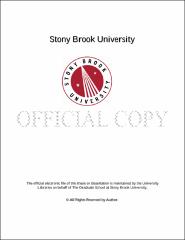| dcterms.abstract | The inspiration and foundation for And Yet... is a collection of home recordings made during the late 1930s on 78 RPM discs. Of these, most feature performances by my maternal grandfather, Gilbert Patten, a gifted bass singer who might well have pursued a professional career had it not been for the demands of family, financial necessity, and eventual poor health. Additional discs in the collection capture the singing voices of my great-grandmother near the end of her life, and my maternal aunts not long after the beginning of theirs. In And Yet..., I have integrated selections from these recordings into an orchestral narrative that, though continuous, can broadly be divided into four movements. The first of these, " Big Profundo" , is a kind of stylized recitative in which the tuba emerges as a prominent soloist, engaging in a free-spirited dialogue with my grandfather's recorded voice that varies between witty banter, pointed remarks, and obstreperous declamations. In the second, " Plain Folks" , my great-grandmother's wonderfully homely voice serves as the point of departure for a lilting, waltz-like theme. As the music progresses, this melody is gradually fragmented and playfully transformed, and is ultimately subsumed into a meditative passacaglia featuring rich jazz harmonies. The third movement, " Feed the Doggie" , is a jaunty scherzo in a fast compound meter, whose quirky harmonic palette is largely based on sixths and sevenths. Only at the end is the source of this material revealed: the voices of my aunts as young children, supplying a spontaneous and endearingly erratic reharmonization of a popular tune. Immediately after this comes the final movement, " Epilogue (And Yet...)" , which introduces the piece's narrator for the first time. In a text based in part on a fragment by Mark Twain, he explicitly reflects on my grandfather's life, while the orchestra accompanies him on a journey of loss, sorrow and, ultimately, redemptive love. In the closing bars of the piece, the narrator bursts into song at last, just before the work ends on a note of unexpected ambivalence. | |

